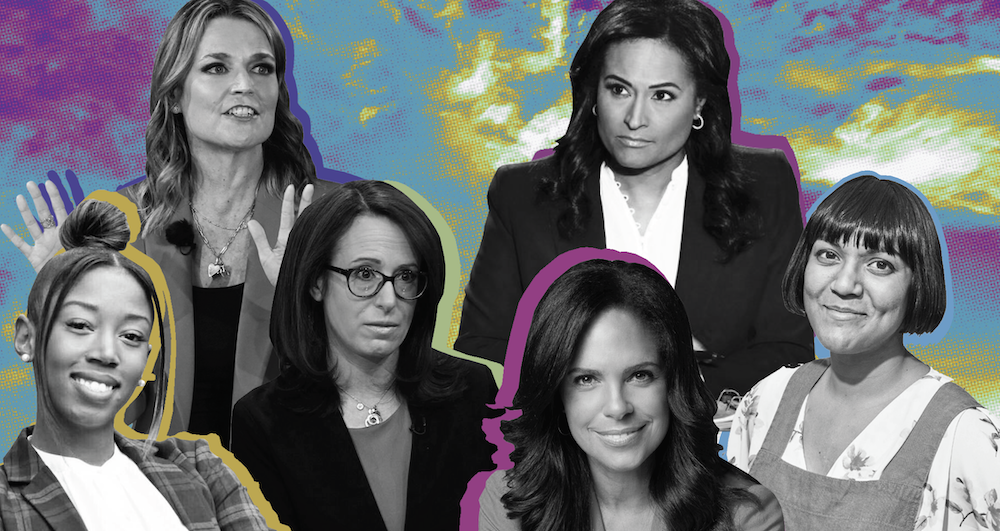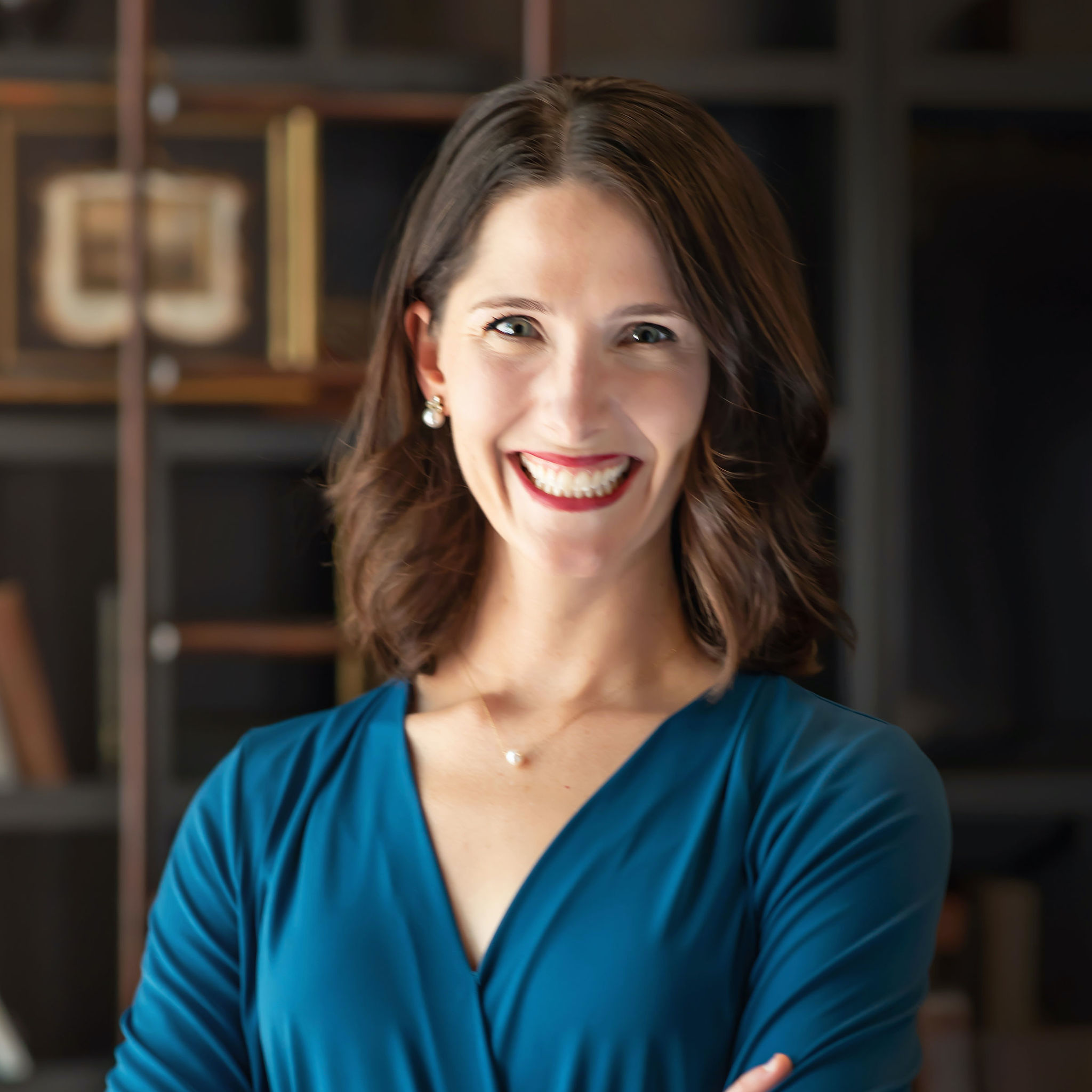This column originally appeared in The Cohort, Poynter’s newsletter by and for women in media. Subscribe here to join this community of trailblazers.
I look forward to all sorts of Year in Review content: Time’s Person of the Year. Spotify’s Wrapped. All gift guides. All best-of lists. It hurt my retinas, but I especially enjoyed Bloomberg Businessweek’s lime green Jealousy List this year.
Yes, these lists are equal parts marketing and editorial. Yes, they often fuel consumerism. But most years — and especially in 2020 — come Dec., I am desperately trying to make sense of the last 12 months. Seeing how others synthesize the year helps.
So here’s one more roundup: the biggest moments for women in media. With the help of many Poynter colleagues, I considered what events, choices and changes in 2020 particularly impacted women in our industry. To be clear, these are not the “best” moments. Rather, they are the most stirring.
I’m sure we missed some — please email me at mgrau@poynter.org and let me know. Still, I hope the attempt at meaning-making helps ground you in the present and think constructively about your future.
2021, here we come.
Way fewer women work in media
Due to higher rates of unemployment among women of color, the child care crisis that disproportionately impacts mothers and the persistent gender pay gap, about 22% of women in the U.S. have left the labor force since the start of the pandemic.
That’s according to a report from Rep. Katie Porter’s (D-Calif.) office that cited an October survey from the Bipartisan Policy Center. The tally amounts to millions of women no longer getting paid to do a job. The 19th* has called this the “first female recession.” Though it’s hard to determine the exact gender breakdown for the news industry’s losses, Poynter’s Kristen Hare has been tracking the newsroom layoffs, furloughs and closures caused by the coronavirus all year.
“There are currently more than 300 entries on the list, made up of thousands of lost jobs, more than 60 closed newsrooms and blow after blow to pay through cuts, furloughs and more,” said Hare. “We don’t yet know who was affected, but local news was certainly hit hard.”
I’m sure if you were laid off, lost work, or ultimately decided to leave your job, you’ll remember it for a long time to come. And each moment you’re gone, we miss out on your unique perspective and contributions.
Journalists of color have a MeToo moment
“Absent a hashtag but buoyed by this public awakening over Black Lives Matter, we have collectively inaugurated our own #MeToo movement,” Soledad O’Brien wrote in The New York Times on the Fourth of July. She was describing how the racial reckoning in the U.S. reverberated throughout the media industry, because “every journalist of color has a story.”
And this not-quite-a-moment-but-a-movement started because of many women of color, including (but certainly not limited to):
- Alexis Johnson, the Black journalist at the Pittsburgh Post-Gazette who was banned from covering anti-racism protests after making a joke on Twitter comparing damage from the protests to garbage after a Kenny Chesney concert. Support for Johnson swelled with #IStandWithAlexis in June, and even the mayor of Pittsburgh tweeted his support. Fast forward and Johnson now works at Vice News Tonight as an on-air TV correspondent. Top management at the Post-Gazette have been reassigned.
- Sohla El-Waylly, the chef and restaurateur who worked as an assistant editor at Bon Appétit and appeared in the “Test Kitchen” video series. She alleged that Bon Appétit did not pay people of color for their work on these videos, while compensating white staffers. This led to editor Adam Rapoport’s resignation in June. Now, El-Waylly is writing a cookbook and a column, guest-judging on cooking shows and starring in her own show, “Stump Sohla.”
- Ashley Alese Edwards, Ashley C. Ford and others alleged a toxic culture and race discrimination at Refinery29, leading to the resignation of co-founder and editor-in-chief, Christene Barberich. Edwards currently works as U.S. partnerships manager at Google News Lab. Ford’s memoir is set to be released next summer.
Like the #MeToo movement that exploded in 2017 but continues today, our work to address systemic racism in our industry will not fizzle out. I anticipate that we’ll see more social media awareness, like #BlackatLAT, more collective support, like the 800 New York Times employees co-signing a letter to management, and — hopefully — more efforts to make it right, like leadership and staffing changes.
Women ascend to top leadership positions at news organizations
In a year characterized by ongoing, overlapping, once-in-a-lifetime crises, it’s not surprising that many women have been promoted to top leadership positions at some of the most powerful news organizations in the world. The road before them is challenging, their success is not guaranteed and some of their appointments have not been without controversy. But it still feels like progress to see these talented, smart women step in to right the ship, including:
- Dawn Davis, the first Black female editor-in-chief of Bon Appétit
- Meredith Kopit Levien, the youngest person to become CEO of The New York Times
- Krissah Thompson, the first managing editor for diversity and inclusion for The Washington Post, and Kat Downs Mulder, the new managing editor/digital at the Post
- Linda Henry, owner of The Boston Globe, and its first female CEO
- Lisa Hughes, the first female publisher of The Philadelphia Inquirer
- Monica Richardson, the first Black executive editor at the Miami Herald
- Khushbu Shah, editor-in-chief of The Fuller Project
- Priska Neely, managing editor of NPR’s new Gulf States Newsroom
Savannah Guthrie and Kristen Welker show us how it’s done
President Donald Trump is famously a challenge to interview on air. During the 2020 general election, two NBC News journalists wowed audiences with their unmatched ability to rein in the bluster tornado: Kristen Welker during the second presidential debate and Savannah Guthrie during the town hall in Miami.
“For viewers raised on voice-of-God, elder-statesman anchors, they are redefining who occupies the seats of power in television media,” wrote Michelle Ruiz in this excellent profile of both women for Vogue.
Maggie Haberman just didn’t stop
Though Trump hasn’t given her an interview all year, you can’t talk about covering Trump without praising New York Times’ Maggie Haberman. The dogged reporter took Trump seriously from day one and exposed much of what we know about the outgoing president.
“She’s done more than a story a day, on average, and stories with her byline have accounted for hundreds of millions of page views this year alone,” wrote Times media columnist Ben Smith in November. “That’s more than anyone else at The Times.”
When you consider Trump’s particular insults and his harassment of female journalists, it’s hard not to feel proud of Guthrie’s, Welker’s and Haberman’s ability to cut through the crap when many other journalists simply cannot.
It’s launch time for women-led newsrooms
The Cohort started this year with a buzzy profile of Emily Ramshaw who co-founded The 19th* with Amanda Zamora. That’s before the pandemic impacted — but did not stifle — the nonprofit newsroom’s official launch around the 100th anniversary of the 19th Amendment this summer. I mean, Meryl Streep and the Duchess of Sussex were headliners.
The 19th*’s coverage, which centers women in stories of politics and policy and is led by editor-at-large Errin Haines and editor-in-chief Andrea Valdez, shaped the conversation around the pandemic and the presidential election this year.
Prism, a BIPOC-led nonprofit news outlet, also officially launched this year with editor-in-chief Ashton Lattimore. Prism’s focus is justice: gender, racial, criminal and electoral. Following a summer of generation-defining activism, we need to challenge who is the hero of America’s story, and Prism is leading the charge.
In the final two months of 2020, we also heard promising announcements of more journalism startups led by women:
- S. Mitra Kalita left her role as senior vice president of CNN Digital News & Programming after the election. She launched Epicenter-NYC, a newsletter to help New Yorkers get through the pandemic, and “will work with Black and Brown community media to create a content-sharing and revenue-generating network” as a Nieman Visiting Fellow.
- Anna Palmer is leaving Politico Playbook, along with John Bresnahan and Jake Sherman, to start a competitor to Playbook in 2021.
- Lauren Williams is leaving her role as editor-in-chief of Vox in February. With Akoto Ofori-Atta, she will launch Capital B, a local and national nonprofit news organization serving Black audiences.
Feminist icon Ruth Bader Ginsberg died — and NPR’s Nina Totenberg revealed the closeness of their relationship
I saw that Supreme Court Justice Ruth Bader Ginsberg died on Sept. 18 via Apple News push notification. When I clicked through, it was Nina Totenberg’s words that brought the legend to life.
I marveled at the accomplishments of each influential woman — RBG as the world-shifting women’s rights lawyer and Totenberg as a founding mother of NPR — and loved learning more about the power of female friendship. I wondered, along with others, if we should have known more about that close relationship over the years.
Women directly benefited from paid family leave policies
As I wrote about this fall in The Cohort, Poynter now offers six months paid leave for birth moms and four months paid leave for parents. Tegna also expanded its paid parental leave. Though details have not been publicized, McClatchy has vowed to implement (its first) paid parental leave policy in 2021.
This amounts to thousands of people in our industry who will have access to the types of policies that have been proven to keep women in the workforce — and in the leadership pipeline.
It would be difficult to argue that 2020 was a good year — for women or anyone. But it was punctuated by moments of progress — with women at the center — that will reverberate for years to come.







